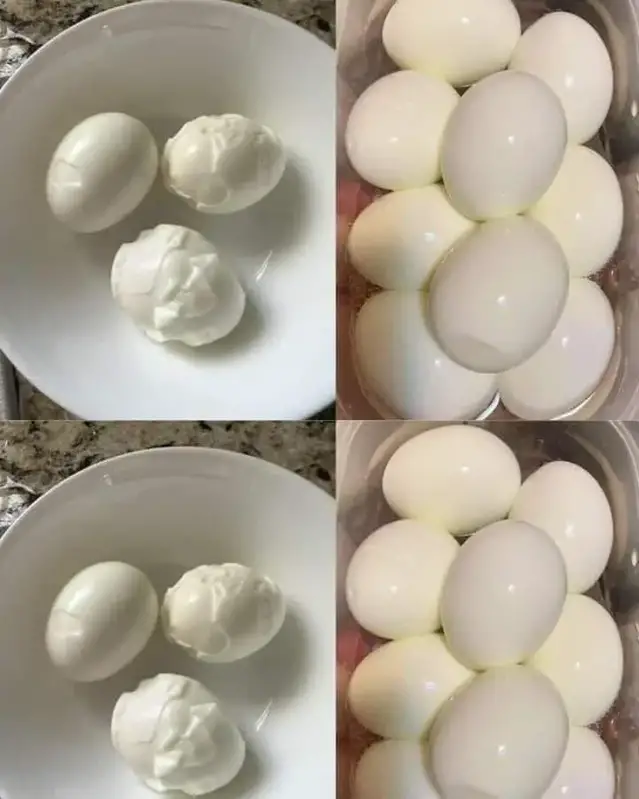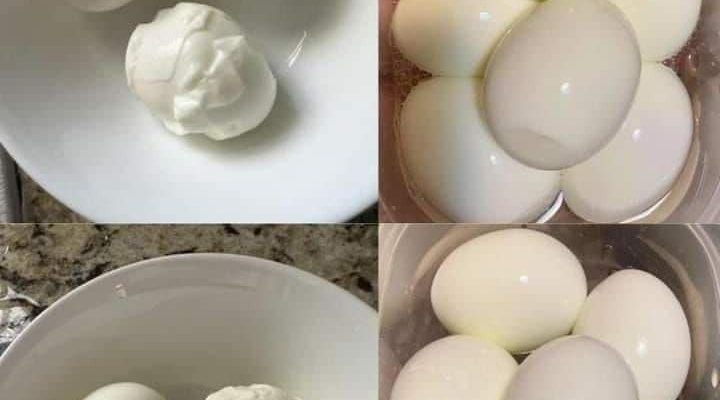3- Boil and Cool Quickly:
Boil the Eggs: Place the eggs in a pot of cold water, making sure there’s enough water to cover the eggs by about an inch. Bring the water to a boil over medium-high heat.
Turn Off the Heat and Cover: Once the water reaches a full boil, turn off the heat and cover the pot with a lid. Let the eggs sit in the hot water for 10-12 minutes, depending on the desired level of doneness.
Transfer to an Ice Bath: After the eggs are done cooking, use a slotted spoon to transfer them into a bowl of ice water. Let the eggs sit in the ice bath for at least 5 minutes. The cold water stops the cooking process and also helps the membrane release from the egg white.
4- Gently Crack and Roll: Once the eggs are cool, gently tap them on a hard surface to create cracks all around the shell. Roll the egg between your hands to loosen the shell, then start peeling from the wider end where there’s often an air pocket that makes it easier to get under the membrane.
5- Peel Under Running Water: If you encounter any stubborn bits of shell, peeling the egg under running water can help. The water flows between the egg and the shell, helping to wash away small shell pieces and making it easier to peel.
Why This Method Works
The key to easily peeling hard-boiled eggs lies in the combination of pH adjustment, cooling quickly, and gentle handling. Changing the pH with baking soda or vinegar reduces the bond between the egg white and the shell, while cooling the eggs quickly in an ice bath makes the shell contract and separate more easily from the egg.
Using these tips, you’ll be able to peel hard-boiled eggs without frustration, giving you smooth, beautiful eggs like those in the image above! Whether you’re making deviled eggs, salads, or simply enjoying them as a snack, this trick will save you time and hassle in the kitchen.




